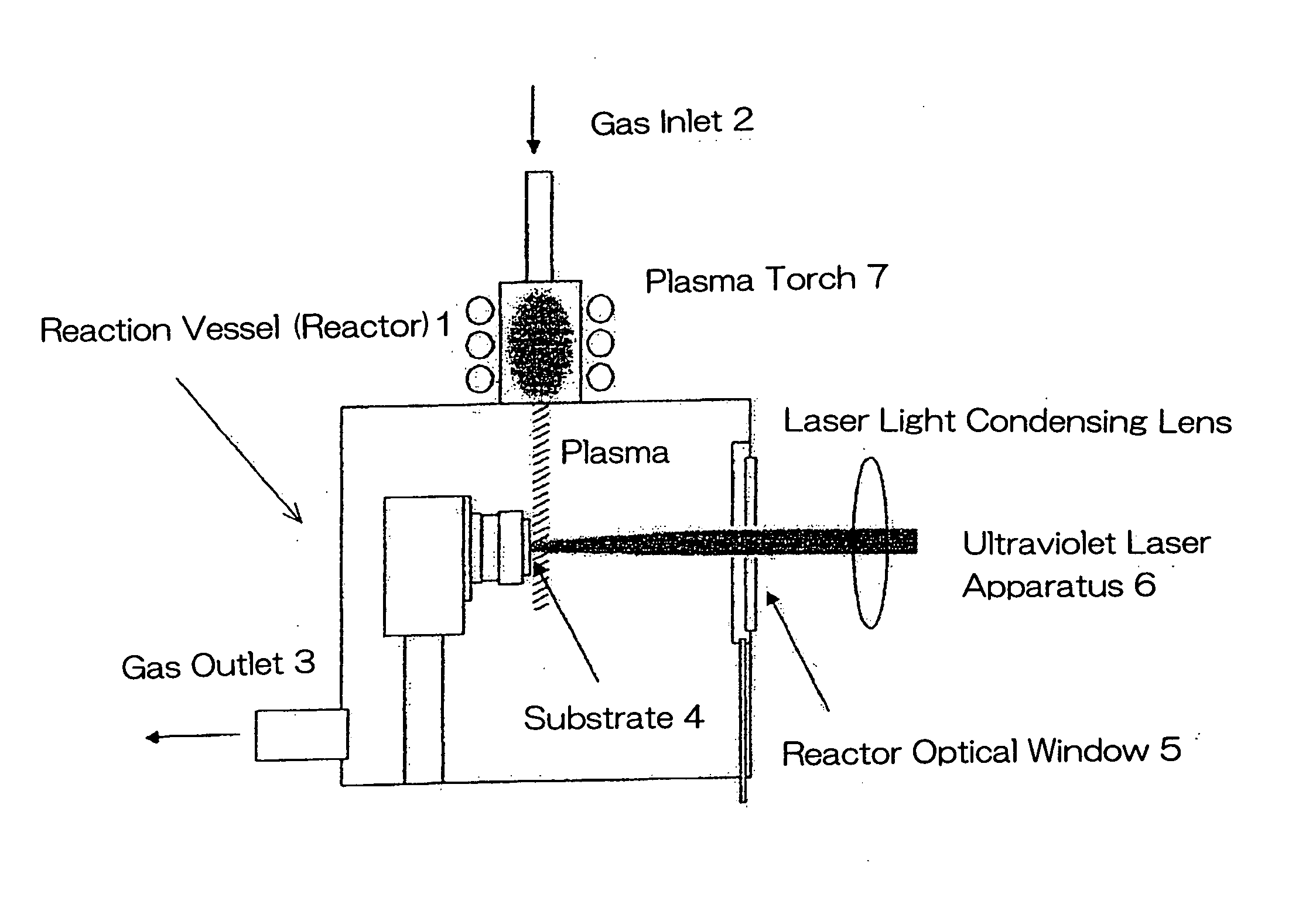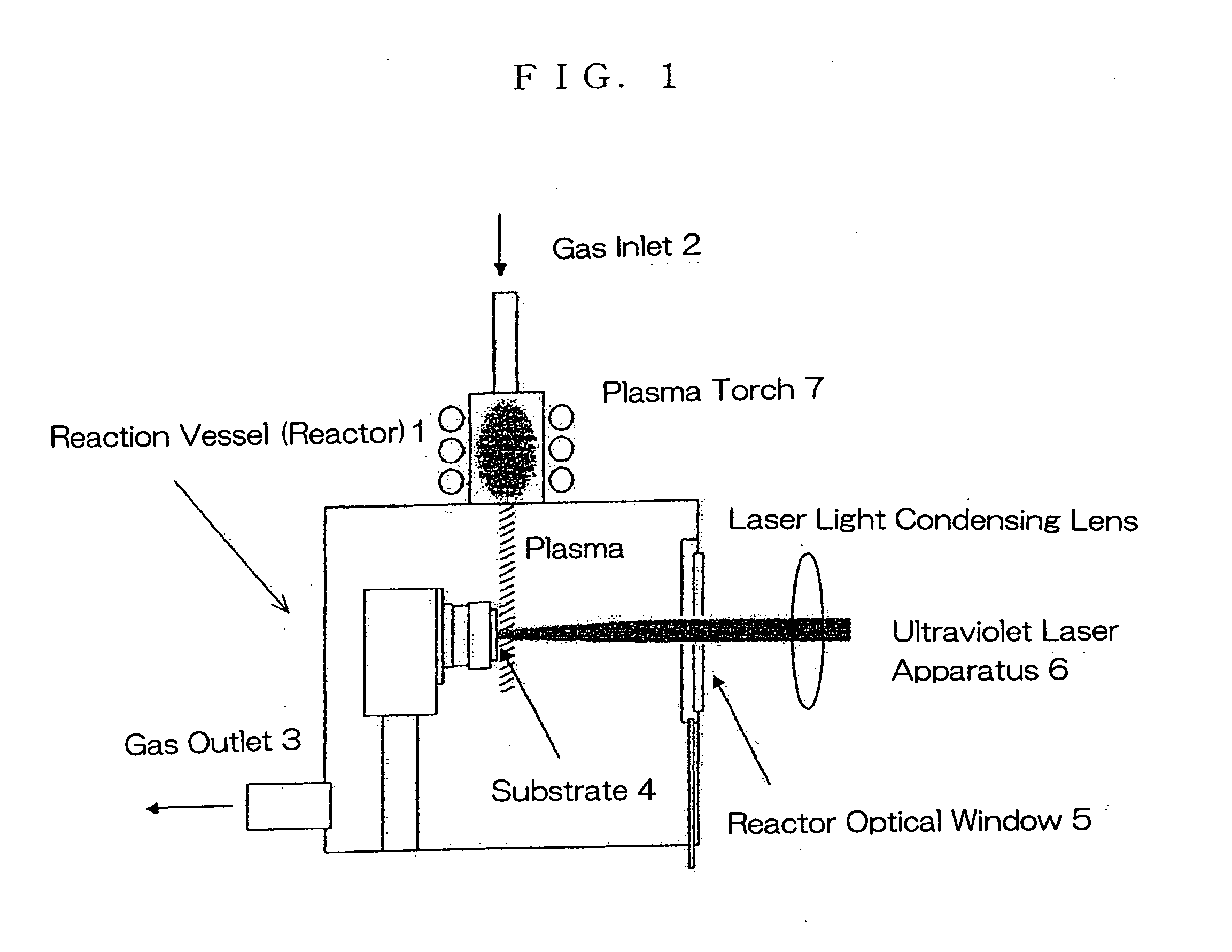Boron Nitride Thin-Film Emitter and Production Method Thereof, and Electron Emitting Method Using Boron Nitride Thin-Film Emitter
- Summary
- Abstract
- Description
- Claims
- Application Information
AI Technical Summary
Benefits of technology
Problems solved by technology
Method used
Image
Examples
example 1
[0064] Within an ambient prepared by introducing diborane at a flow rate of 5 sccm and ammonia at a flow rate of 10 sccm into a dilution gas of argon at a flow rate of 3 SLM so that the ambient is concurrently exhausted by a pump to keep the ambient under a pressure of 10 Torr, excimer laser ultraviolet light was irradiated onto a disk-like nickel substrate having a diameter of 25 mm and kept at a temperature of 900° C. (see FIG. 1). At this time, the mixed gas was made into plasma in an inductively coupled manner by an electric field at 13.56 MHz as shown in this figure (although it has been found out that the same morphology is obtained to attain an excellent field electron emission property even when the mixed gas is not made into plasma, differences are then left in growth rate and the like). Synthesis time of 60 minutes gave an intended substance. This specimen was determined by X-ray diffraction to have a hexagonal crystal system exhibiting a 5H type polymorphic structure by s...
example 2
[0067] As shown in FIG. 5, there were used the fractal emitter specimen obtained in Example 1, and a mica layer having a thickness of 50 μm as an inter-electrode gap forming insulation layer placed on the thin-film specimen, followed by placement of an ITO glass onto the mica layer such that an ITO surface was faced toward the specimen surface. The ITO surface acted as an anode and the specimen side acted as a cathode, while defining a gap of about 40 μm between the cathode surface and the ITO surface of anode, thereby establishing a sample for measurement of electron emission property of the emitter. Measurement method and measurement result thereof will be described in detail in Examples 3 and 4.
example 3
[0069] The fractal emitter measurement sample (see FIG. 5) obtained in Example 2 was installed in a hermetically sealed measurement vessel. At this time, placed in the vessel was a sponge containing ethyl alcohol, thereby realizing an air ambient including a large amount of ethyl alcohol and at the atmospheric pressure. Measurement results of electric current and voltage properties under this condition are shown in FIG. 6. At that time, there was connected a resistance of 100 kΩ in series with the sample, for the purpose of preventing an excessively large electric current from flowing through the sample.
PUM
| Property | Measurement | Unit |
|---|---|---|
| Temperature | aaaaa | aaaaa |
| Pressure | aaaaa | aaaaa |
| Temperature | aaaaa | aaaaa |
Abstract
Description
Claims
Application Information
 Login to View More
Login to View More - R&D
- Intellectual Property
- Life Sciences
- Materials
- Tech Scout
- Unparalleled Data Quality
- Higher Quality Content
- 60% Fewer Hallucinations
Browse by: Latest US Patents, China's latest patents, Technical Efficacy Thesaurus, Application Domain, Technology Topic, Popular Technical Reports.
© 2025 PatSnap. All rights reserved.Legal|Privacy policy|Modern Slavery Act Transparency Statement|Sitemap|About US| Contact US: help@patsnap.com



